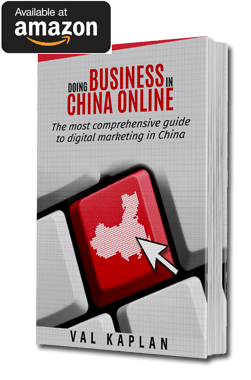Sina Weibo has been one of the principal platforms for social networking in China since its launch in August 2009. The word “weibo” (微博) itself means “microblog” in Chinese and there are several microblog platforms in China. Sina Weibo and Tancent Weibo have the largest subscription base while others, such as Sohu, Netease, Shanda and Baidu, are still lagging far behind.
Two most popular Weibo platforms share a lot of similarities and both are run by two giants of Chinese internet:
- Tancent, the company behind hugely successful QQ IM service and QZone social media service;
- Sina Corp. with its principal microblog product and a few spin-offs such as Tumblr-like Sina Qing and location based service, WeiLingDi;
In terms of registered users, Tancent Weibo is slightly ahead of Sina Weibo, 500 million vs. 400 million respectively (of course, “slightly” is a relative term in China’s case). Also, both platforms have roughly equal number of active users making Sina Weibo a more active one in proportion to its user base.
Another principal difference between both services is the fact that Sina Weibo is by far more popular in 1st and 2nd tier cities (learn more about China’s city tier system here), while Tancent Weibo has the largest penetration in 3rd and 4th tiers.
Weibo is positioning itself as a sort of CRM service by connecting users with brands in a more natural and sustainable way.
In general, both Sina and Tancent “Weibos” share more similarities than there are differences between them and both are often compared to Twitter. In reality, Chinese microblog platforms are more of a hybrid between Facebook and Twitter. For example, they allow sharing video content (Twitter has enabled this functionality only recently), 140 character limit on tweets allows to say much more in Chinese than it does in English due to different nature of the language, Weibo pages are fully functional Facebook-like ones and both services allow comments on tweets and re-tweets.
It is also very likely that both Sina and Tancent will follow similar marketing direction in their monetizing and general business strategy. Ken Hong, Sina Weibo Marketing Strategy GM, has noted a few points during his recent interview:
- Weibo development is getting more aligned with mobile usage vs. traditional desktop-centered interface. In the past, mobile version was following the desktop one while now it is the other way around;
- The company invests in simplifying payment methods by making them more integrated into the microblog platform itself. New features, such as payment information storage, credit based system and others will possibly be rolling out in the near future;
- Weibo is positioning itself as a sort of CRM (customer relationship management) service by connecting users with brands in a more natural and sustainable way;
- Sina is hoping to get more brands onboard with their loyalty programs integrated with Weibo platform. It is expected that brand loyalty and conversion rates will be increased by wooing more customers by offering coupons and discounts that are available in real time and just a click or two away;
Ken Hong has also responded to a question about growing popularity of WeChat and its possible competition with Sina Weibo and I think his answer really addressed the core difference between the two. WeChat, with its inherent mobility and instant connectivity between users, is all about keeping in touch with existing customers while Weibo, with its appealing graphic and link rich content, is geared more towards discovery of new brands and products.



